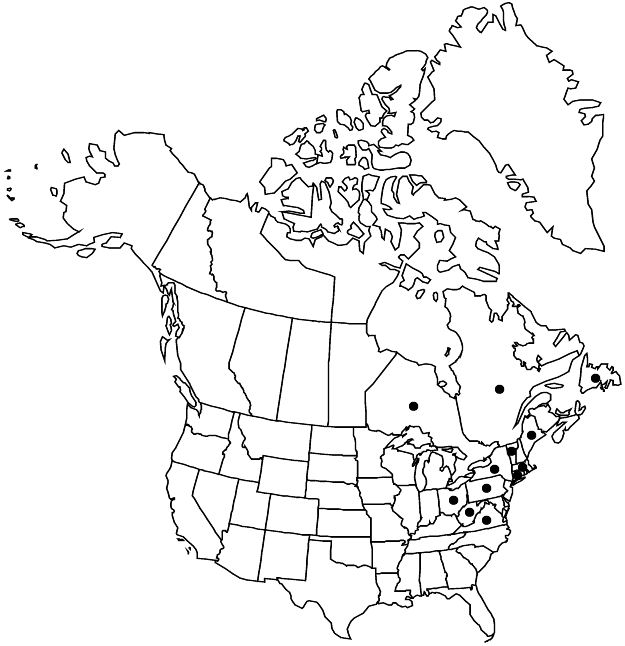Difference between revisions of "Fragaria vesca subsp. vesca"
FNA>Volume Importer |
imported>Volume Importer |
||
| (6 intermediate revisions by 2 users not shown) | |||
| Line 1: | Line 1: | ||
{{Treatment/ID | {{Treatment/ID | ||
|accepted_name=Fragaria vesca subsp. vesca | |accepted_name=Fragaria vesca subsp. vesca | ||
| − | |accepted_authority= | + | |accepted_authority= |
|publications= | |publications= | ||
|basionyms= | |basionyms= | ||
| Line 19: | Line 19: | ||
|elevation=50–1000 m | |elevation=50–1000 m | ||
|distribution=Nfld. and Labr. (Nfld.);Ont.;Que.;Conn.;Maine;Mass.;N.Y.;Ohio;Pa.;Vt.;Va.;W.Va.;Eurasia;introduced also in Mexico;West Indies;South America;Pacific Islands (Hawaii) | |distribution=Nfld. and Labr. (Nfld.);Ont.;Que.;Conn.;Maine;Mass.;N.Y.;Ohio;Pa.;Vt.;Va.;W.Va.;Eurasia;introduced also in Mexico;West Indies;South America;Pacific Islands (Hawaii) | ||
| + | |introduced=true | ||
|discussion=<p>Subspecies vesca is occasionally naturalized in North America.</p> | |discussion=<p>Subspecies vesca is occasionally naturalized in North America.</p> | ||
|tables= | |tables= | ||
| Line 28: | Line 29: | ||
-->{{#Taxon: | -->{{#Taxon: | ||
name=Fragaria vesca subsp. vesca | name=Fragaria vesca subsp. vesca | ||
| − | + | |authority= | |
| − | |authority= | ||
|rank=subspecies | |rank=subspecies | ||
|parent rank=species | |parent rank=species | ||
| Line 44: | Line 44: | ||
|publication year= | |publication year= | ||
|special status= | |special status= | ||
| − | |source xml=https:// | + | |source xml=https://bitbucket.org/aafc-mbb/fna-data-curation/src/2e0870ddd59836b60bcf96646a41e87ea5a5943a/coarse_grained_fna_xml/V9/V9_440.xml |
|subfamily=Rosaceae subfam. Rosoideae | |subfamily=Rosaceae subfam. Rosoideae | ||
|tribe=Rosaceae tribe Potentilleae | |tribe=Rosaceae tribe Potentilleae | ||
Latest revision as of 23:56, 5 November 2020
Leaves bright green; terminal leaflet blade ovate or obovate to slightly rhombic, length/width 1.1–1.6, teeth: relative number 0.2–0.5, relative size 2–3.9, terminal tooth longer than adjacent teeth. Flowers bisexual, 13.2–20.5 mm diam.; hypanthium 11.2–17 mm diam.; petals white, widely depressed, obovate to nearly orbiculate, margins overlapping or distinct, sometimes distally crenate. Achenes superficial or in shallow pits; bractlets and sepals spreading to reflexed; torus carmine to wine red, shiny, globose or subglobose (often slightly oblate or conic), easily separating from hypanthium. 2n = 14.
Phenology: Flowering spring
Habitat: Open forests, edges of woods, thickets, meadows
Elevation: 50–1000 m
Distribution

Introduced; Nfld. and Labr. (Nfld.), Ont., Que., Conn., Maine, Mass., N.Y., Ohio, Pa., Vt., Va., W.Va., Eurasia, introduced also in Mexico, West Indies, South America, Pacific Islands (Hawaii)
Discussion
Subspecies vesca is occasionally naturalized in North America.
Selected References
None.